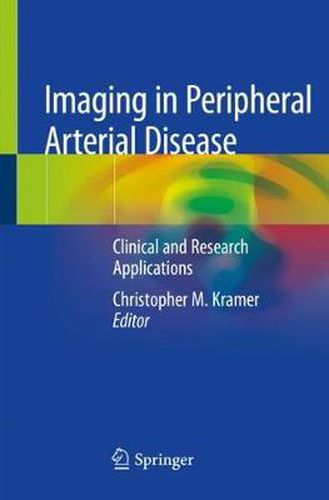Readings Newsletter
Become a Readings Member to make your shopping experience even easier.
Sign in or sign up for free!
You’re not far away from qualifying for FREE standard shipping within Australia
You’ve qualified for FREE standard shipping within Australia
The cart is loading…






This book presents up-to-date information on clinical and research applications of imaging in peripheral arterial disease (PAD). It provides high-quality images useful not only in the diagnosis of PAD but also for use in clinical trials aimed at the development of novel therapies such as angiogenic agents and stem cells. The book begins with coverage of the applications of the four major imaging modalities in a clinical setting: ultrasound, computed tomography angiography (CTA), magnetic resonance angiography (MRA), and digital subtraction angiography (DSA). It also discusses the ankle brachial index (ABI) as a screening technique to establish the presence of PAD. Subsequent chapters focus on the advantages and limitations of various research applications of imaging in PAD including contrast ultrasound for measuring perfusion; MRI for assessing perfusion, energetics, plaque volume, and characteristics; and radionuclide imaging for perfusion and inflammation. Imaging in Peripheral Arterial Disease: Clinical and Research Applications is an essential resource for physicians, researchers, residents, and fellows in cardiology, radiology, imaging, nuclear medicine, diagnostic radiology, and vascular surgery.
$9.00 standard shipping within Australia
FREE standard shipping within Australia for orders over $100.00
Express & International shipping calculated at checkout
This book presents up-to-date information on clinical and research applications of imaging in peripheral arterial disease (PAD). It provides high-quality images useful not only in the diagnosis of PAD but also for use in clinical trials aimed at the development of novel therapies such as angiogenic agents and stem cells. The book begins with coverage of the applications of the four major imaging modalities in a clinical setting: ultrasound, computed tomography angiography (CTA), magnetic resonance angiography (MRA), and digital subtraction angiography (DSA). It also discusses the ankle brachial index (ABI) as a screening technique to establish the presence of PAD. Subsequent chapters focus on the advantages and limitations of various research applications of imaging in PAD including contrast ultrasound for measuring perfusion; MRI for assessing perfusion, energetics, plaque volume, and characteristics; and radionuclide imaging for perfusion and inflammation. Imaging in Peripheral Arterial Disease: Clinical and Research Applications is an essential resource for physicians, researchers, residents, and fellows in cardiology, radiology, imaging, nuclear medicine, diagnostic radiology, and vascular surgery.